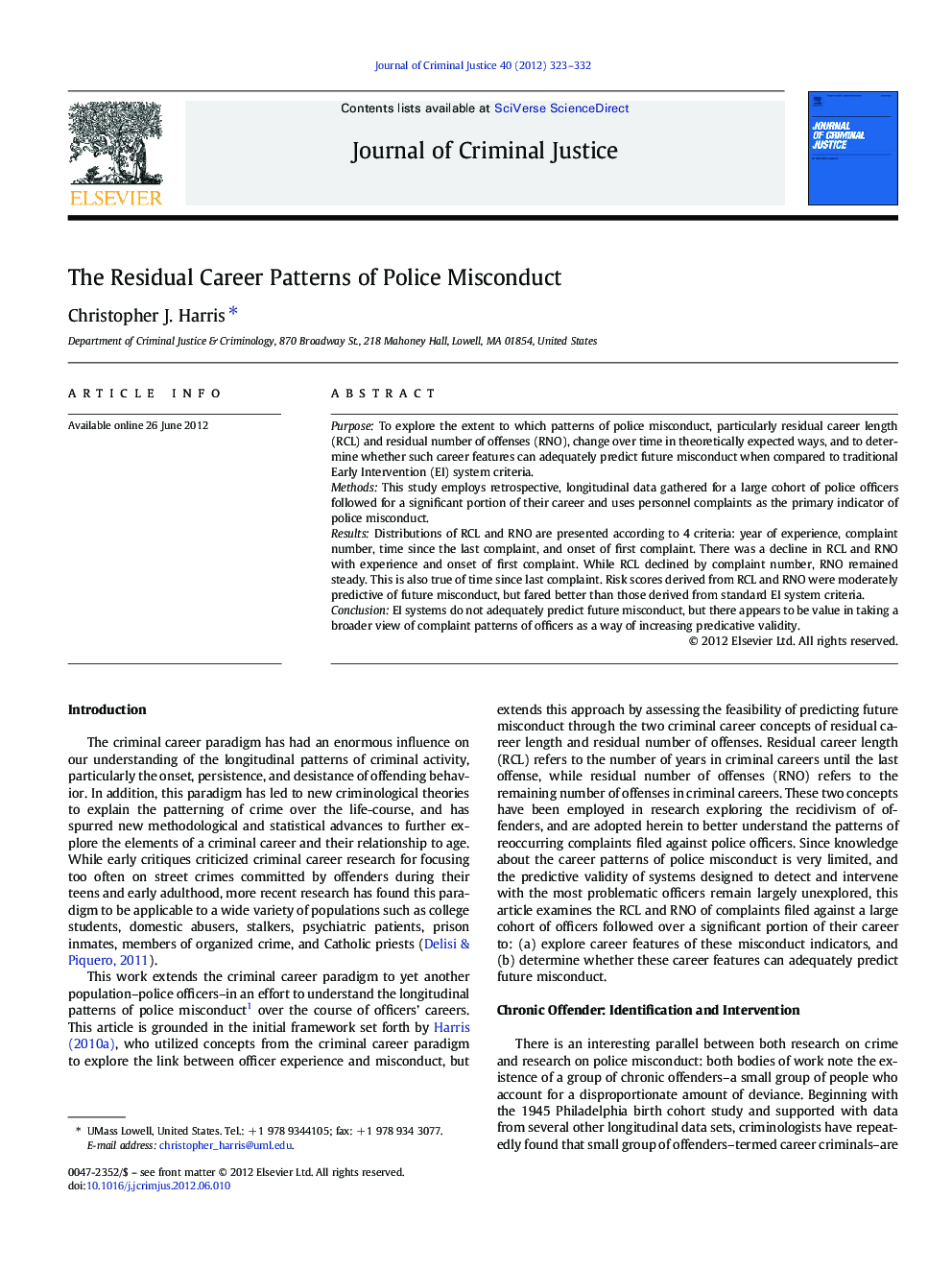| کد مقاله | کد نشریه | سال انتشار | مقاله انگلیسی | نسخه تمام متن |
|---|---|---|---|---|
| 882860 | 912030 | 2012 | 10 صفحه PDF | دانلود رایگان |

PurposeTo explore the extent to which patterns of police misconduct, particularly residual career length (RCL) and residual number of offenses (RNO), change over time in theoretically expected ways, and to determine whether such career features can adequately predict future misconduct when compared to traditional Early Intervention (EI) system criteria.MethodsThis study employs retrospective, longitudinal data gathered for a large cohort of police officers followed for a significant portion of their career and uses personnel complaints as the primary indicator of police misconduct.ResultsDistributions of RCL and RNO are presented according to 4 criteria: year of experience, complaint number, time since the last complaint, and onset of first complaint. There was a decline in RCL and RNO with experience and onset of first complaint. While RCL declined by complaint number, RNO remained steady. This is also true of time since last complaint. Risk scores derived from RCL and RNO were moderately predictive of future misconduct, but fared better than those derived from standard EI system criteria.ConclusionEI systems do not adequately predict future misconduct, but there appears to be value in taking a broader view of complaint patterns of officers as a way of increasing predicative validity.
► RCL and RNO declined by experience and onset.
► RCL declined by complaint number, but RNO remained steady.
► RCL declined by time since last complaints, but RNO remained steady.
► RCL and RNO risk scores were moderate predictors of future misconduct.
► EI system risk scores were poor predictors of future misconduct.
Journal: Journal of Criminal Justice - Volume 40, Issue 4, July–August 2012, Pages 323–332